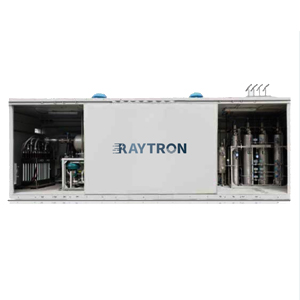1. Introduction: The Role of Blue Hydrogen
Blue hydrogen has emerged as a critical transition fuel in the global energy transition, offering a lower-carbon alternative to conventional fossil fuel-based hydrogen production. Produced through steam methane reforming (SMR) or autothermal reforming (ATR) with carbon capture and storage (CCS), blue hydrogen can reduce emissions by 85-95% compared to traditional gray hydrogen.
The International Energy Agency (IEA) estimates that blue hydrogen could satisfy 40% of global hydrogen demand by 2030, serving as a bridge until green hydrogen becomes cost-competitive at scale.
2. Production Technologies
2.1 Steam Methane Reforming with CCS
Process Overview:
- Primary Reforming:
- CH₄ + H₂O → CO + 3H₂ (700-1000°C, Ni catalyst)
- Water-Gas Shift:
- CO + H₂O → CO₂ + H₂
- Carbon Capture:
- Pre-combustion capture (90-95% efficiency)
- Typical capture methods: amine scrubbing, pressure swing adsorption
Key Parameters:
| Metric | Value |
|---|---|
| Natural gas input | 3.5-4.0 kWh per kg H₂ |
| CO₂ capture rate | 90-95% |
| System efficiency | 70-75% (LHV basis) |
2.2 Autothermal Reforming (ATR)
- Combines partial oxidation with steam reforming
- Operates at higher pressures (30-50 bar)
- More compact design, easier CCS integration
- Shell’s Blue Hydrogen Process achieves 98% carbon capture
3. Carbon Capture Technologies
3.1 Post-Combustion Capture
- Amine-Based Systems:
- 30% MEA solution captures 90% CO₂
- Energy penalty: 15-20% of plant output
- New solvents (e.g., CESAR1) reduce energy use by 30%
- Membrane Systems:
- Polymeric membranes (CO₂/N₂ selectivity >50)
- Compact modular designs
3.2 Pre-Combustion Capture
- Physical Absorption:
- Selexol process (95% capture efficiency)
- Preferred for high-pressure syngas
- Sorption-Enhanced Reforming:
- CaO-based sorbents
- Simultaneous H₂ production and CO₂ capture
3.3 Emerging Technologies
- Metal-Organic Frameworks (MOFs):
- Record CO₂ capacity (8 mmol/g at 1 bar)
- Lower regeneration energy than amines
- Cryogenic Capture:
- Demonstrated at 50 tCO₂/day scale
- 99.9% purity achievable
4. Major Global Projects
4.1 North America
| Project | Details |
|---|---|
| Air Products Net-Zero | $4.5B complex in Texas (2027), 1.8 MtCO₂/yr storage |
| Quest CCS (Canada) | 1 MtCO₂/yr since 2015, 95% capture rate |
4.2 Europe
| Project | Details |
|---|---|
| Northern Lights | 1.5 MtCO₂/yr capacity (2024), offshore storage |
| H2H Saltend (UK) | 600 MW ATR+CCS plant, 98% capture |
4.3 Middle East
| Project | Details |
|---|---|
| ADNOC H2 | 300,000 t/yr blue ammonia, CCUS-enabled |
5. Environmental Considerations
5.1 Methane Leakage
- Supply chain CH₄ emissions can negate CCS benefits
- Latest infrared detection tech reduces leaks by 80%
5.2 Lifecycle Analysis
| Hydrogen Type | GHG Emissions (kgCO₂eq/kgH₂) |
|---|---|
| Gray | 10-12 |
| Blue (90% CCS) | 1.5-3.0 |
| Green | 0-0.5 |
Source: MIT Energy Initiative (2023)
6. Economic Analysis
6.1 Cost Breakdown
| Cost Component | SMR+CCS ($/kg) | ATR+CCS ($/kg) |
|---|---|---|
| Natural gas (at $5/MMBtu) | 0.80 | 0.75 |
| CCS | 0.40 | 0.35 |
| Capital costs | 0.60 | 0.55 |
| Total | 1.80 | 1.65 |
Assumptions: 90% capacity factor, 20-year plant life
6.2 Policy Support
- US 45Q Tax Credit: $85/tCO₂ stored
- EU Carbon Border Tax: Encourages low-carbon H₂
- UK CCUS Cluster Sequencing: £1B funding
7. Challenges and Solutions
7.1 Technical Challenges
- Solvent Degradation:
- New amine blends last 2-3x longer
- Pipeline Transport:
- H₂ embrittlement requires pipeline upgrades
7.2 Public Acceptance
- Perception Issues:
- “Fossil fuel dependency” concerns
- Education campaigns showing 90% emission cuts
7.3 Regulatory Frameworks
- Lack of unified CCS certification
- Developing CO₂ storage liability regimes
8. Future Outlook
The Global CCS Institute projects 150 blue hydrogen plants by 2030, capturing 200 MtCO₂ annually. Key developments:
- Next-Gen Reforming:
- Chemical looping (99% capture demonstrated)
- Hybrid Systems:
- Blue-green hydrogen combinations
- CO₂ Utilization:
- Enhanced oil recovery → permanent storage
9. Conclusion
Blue hydrogen serves as an essential transition solution, with current technology capable of delivering large-scale low-carbon hydrogen at competitive costs. While challenges remain in methane management and public perception, ongoing innovations in carbon capture and regulatory support position blue hydrogen to play a pivotal role in decarbonizing hard-to-abate sectors through 2040.

